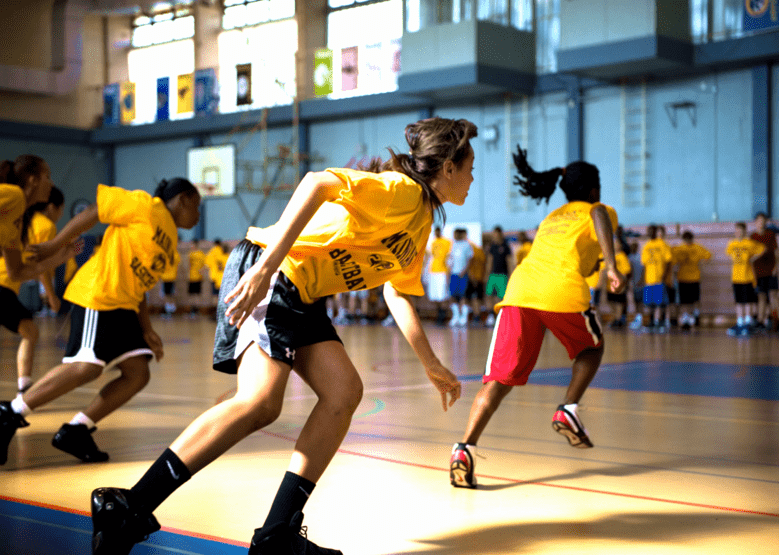…what message are we sending our kids about injury prevention?

Each of us has developed our own process when preparing ourselves for sport. Some of us will spend a little bit of time on a warm-up regime, loosely based around our schooldays PE lessons. Some are sold on the latest online innovations and ideas extolled by ‘field experts’. Others are content to warm-up simply by reaching down to tie a shoelace. In fact, a recent poll by ‘runners world’ suggested that 75% of us don’t give any considered time to warming up before we go out and put some miles in on the road.
Whatever we DO chose to do, why do we do it? And what do we say to our children about engaging in warm-ups?
For physiotherapists, managing both the injury AND the athlete is a juggling act. Recovery from injury will feel like too long to any injured athlete. The most common of sporting injuries, an ankle sprain, may take several weeks to resolve (grade dependent), whilst a more serious injury, like an ACL (anterior cruciate ligament) rupture, might well require surgery, removing the injured athlete from their sport for at least 9-12 months.
But what if you could avoid getting injured in the first place?
There are plenty of injury prevention protocols and warm-ups out there on the web, some of which have been rigorously tested through clinical research trials. These injury prevention programmes contain a mix of physical demands including dynamic stabilising exercises, plyometrics, core control, proprioceptive training, controlled body weight strengthening and sport specific movement patterns.
The FIFA 11+ is a football specific warm-up established in 2009, which is also shown to reduce injuries in football and other sports, such as basketball. Used as a warm-up 2-3 times a week, it comprises a progression of 15 exercises over a 20 minute warm-up. Research has shown that it can reduce injuries by as much as 50% over the season

Similar effects are seen in other sports too. The PEP (prevent injury, enhance performance) programme is widely adopted by netball teams, and has demonstrated great success in reducing ACL injuries in sport through another 15-20 minute warm-up programme. Elsewhere the RFU’s ‘Activate’ programme has also shown great success at both adult and youth levels, with particular benefits made in lower limb injuries and concussions through a progressive x2-3 weekly warm-up programme.

Despite the clear benefits of reducing injury risk, the practicalities of integrating them into club sport can prove a barrier. Most of us are aware of the need for a warm-up before sport, but as volunteer coaches or pitch-side parents, we may not know where to start. As a parent and physiotherapist who spends a lot of time treating adolescent sporting injuries at our Physiotherapy clinics in Didcot and Oxford, the trials and tribulations of adolescent injury management are all too familiar. Appropriate warm-ups across adolescent sport could significantly reduce both the number AND severity of injuries passing through our clinic doors. Less stress for the child, less stress for the parent and most of all, fewer long-term health implications for the children when they’re older.

ADOLESCENT INJURY PREVENTION:
NICE Guidelines suggest that our kids should aim for 60 minutes of exercise a day.
Targeted injury prevention programmes/warm-ups significantly reduce injury prevalence in sport by up to 50%.
Time off sport for children has far reaching effects beyond the acute injury itself, including social isolation, loss of peer interaction and the fear of losing their place on the team.
FIFA 11+ – https://www.yrsa.ca/fifa-11.html
PEP – https://www.aclstudygroup.com/pdf/pep-program.pdf
ACTIVATE – https://www.englandrugby.com/participation/coaching/activate
Most children I know play sport for fun, and whilst warm-ups might not be the focus, they’re better than watching-on from the sidelines with an injury. If children see their elders and role-models warming-up and understand the point in preparing for sport effectively, then maybe one day they’ll think it’s strange if they don’t do one? There’s a lot of work to do before we reach that point, but if any of the above resonates, then why not take a look at the links above or pass this article on? …….and if you’re one of those who warms-up by reaching for your shoe-laces, maybe have a go yourself? You might be surprised how you feel. If we practice what we preach, then injury prevention can become a normal part of childrens’ sport, as well as our own.
This article was written by Frankie Chesterton, (Chartered Physiotherapist at Flex Physiotherapy Practice) (//flexphysiopractice.com/staff/) on Monday 3rd February 2020
REFERENCES:
https://www.nice.org.uk/guidance/ph17/chapter/1-Recommendations
Attwood MJ, Roberts SP, Trewartha G, et al Efficacy of a movement control injury prevention programme in adult men’s community rugby union: a cluster randomised controlled trial British Journal of Sports Medicine 2018;52:368-374
Bizzini M, Dvorak J FIFA 11+: an effective programme to prevent football injuries in various player groups worldwide—a narrative review British Journal of Sports Medicine 2015;49:577-579
Voskanian N. ACL Injury prevention in female athletes: review of the literature and practical considerations in implementing an ACL prevention program. Curr Rev Musculoskelet Med. 2013;6(2):158–163. doi:10.1007/s12178-013-9158-y
DISCLAIMER:
Blog publications on this site are for informational purposes only. They do not replace the need for professional medical assessment. It is the users’ responsibility to evaluate their own medical and physical health, and seek professional input before acting on any information reported in this blog.
The views and opinions expressed in this blog are solely those of the original author and do not necessarily represent the views of Tom Jacobs, Flex Physio Practice staff and/or any/all contributors to this site. The information published is only considered accurate at the time of publication. Flex Physiotherapy Practice and it’s staff cannot be held liable for damages resulting from the use and interpretation of the information in this blog.